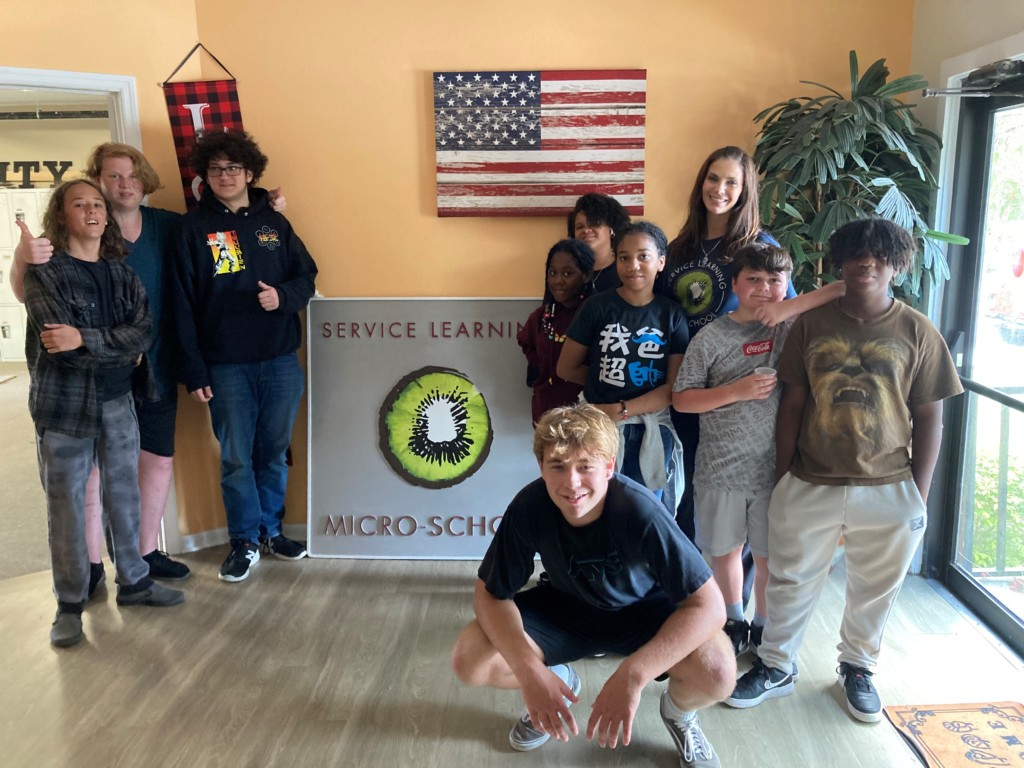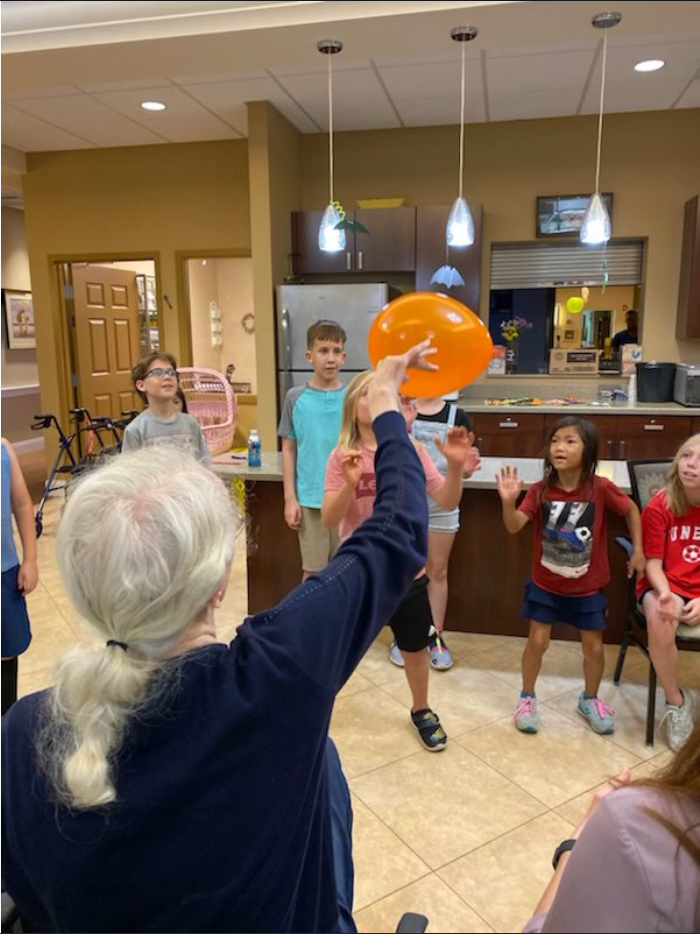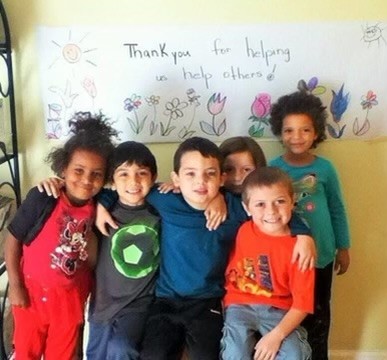
CLEARWATER, Fla. – Before all the buzz about learning pods and micro-schools, some folks were already creating learning pods and micro-schools.
Jaime Manfra went down this path 10 years ago.
Her Service Learning Micro-school (SLS) is all about flexibility, diversity, community service. Students here spend a lot of time helping others, whether it’s making sandwiches for the homeless, volunteering at a horse rescue, or playing balloon volleyball with residents at the assisted living facility next door.
“Service is love in action, it’s virtue in action,” Manfra said. Students “need concrete ways of applying kindness.”
SLS isn’t for everybody. But with education choice, it shows what’s possible for everybody. Options that can be created and customized. For and by families and educators. To address whatever needs they feel are paramount.
To be sure, hurdles remain. SLS, for example, wrestled for years with finding a good facility. But policies to maximize flexibility for families and educators continue to get traction.
As they do, more problem-solvers like Manfra will find a way.
***
SLS began as a pod in 2012.
Manfra’s son Ajay turned out to be too much of a square peg for public school. So Manfra, who once taught classes in natural medicine, began homeschooling Ajay & a handful of other students.

Word spread. The pod grew.
Now SLS has 44 students in K-12, most in middle & high.
All but two use school choice scholarships.
About 75 percent attended public schools. Many left because of peer pressure and bullying. Others left because of an academic environment their parents described as stifling.
At SLS, they found smaller classes, a competency-based approach, and far less pressure.
“I don’t see my children suffering anymore,” said Soji Jacobs, who enrolled her three children in SLS last fall. “They’re no longer ruled by grades, like it was decided who you were in life based on a grade,” continued Jacobs, a floral designer and former private school teacher. “They feel at home. They’re accepted for who they are. They’re genuinely loved.”
Barbara Warne enrolled her daughter Elizabeth into SLS six years ago, after six years at a highly touted magnet school. The school has a long waiting list, but for Elizabeth, who has ADHD, it never worked.
“I was brainwashed into thinking that this was the best school choice,” said Warne, a stay-at-home mom whose husband is an Army veteran and airplane mechanic. “Every day, they made her feel like a failure. It started to get to her mentally.”
Warne said she was sold on SLS as soon as she and Elizabeth attended an open house. She watched her daughter interact with Manfra and other students and immediately “start coming out of her shell.”
“It was unfolding in front of me,” Warne said. “I was getting my kid back.”
***
For Manfra, finding a good facility was the biggest hurdle.
Facilities are an issue for many on the education frontier. Official definitions of “school” can be a challenge for smaller, harder-to-define operations. There’s a hodge podge of zoning rules and building codes regulating “schools.”
Facility one for the pod that became SLS was in a house. But the pod outgrew it.
Facility two was in a community rec center. But it wasn’t ideal. School supplies and equipment had to be moved to and from the facility every day.
Facility three was another house. At this point, the pod had nine or 10 students. But the pod couldn’t stay because the house did not meet building codes for “educational occupancy.” Getting the pod up to code would have cost at least $50,000, Manfra said. And there was still the possibility local officials would not approve a zoning change and building use exemption.
Facility four was in a church. But if the pod wanted to become a private school – so it could accept school choice scholarships and be accessible to more families – the church would need upgrades.
Facility five was in another community rec center. It did meet requirements for a private school, so SLS could now accept scholarships. But when the center got a grant to renovate, it didn’t renew the lease.
Facility six is SLS’s current home. It’s a 4,600-square-foot commercial building that once housed a day care and construction company. Manfra had to be persistent to get a building use exemption, but in the end, SLS got what it needed.
***
SLS’s motto is “unity in diversity.”
Half the students are students of color. Nearly all are from working-class families.
A fifth are from military families.

They are Christian, Muslim, atheist, agnostic. Manfra & her two kids are Baha’i.
School choice enabled SLS to be diverse and different.
“Without the scholarships, only one type of family would be here,” Manfra said. “School choice scholarships make it so all families can be here.”
SLS occasionally holds “diversity BBQs” for its families.
Parents and students debate hot topics. Race. Religion. Politics.
The students “need to know that someone that doesn’t believe the same as you, or look the same as you, does not make them a bad person,” Warne said.
“I want my kids to hear all sides,” continued Warne, a registered Republican. People may disagree on some issues but “we’re trying to get somewhere, together.”
Things can heat up at the BBQs. But there is mutual respect and friendship.
The BBQs ends in hugs.
***
SLS is now seeking to help other micro-schools grow – and avoid the mistakes it made.
This year Manfra helped a former private school teacher in Tampa start her own micro-school. It’s a dual language school.
But there’s no end to the variety teachers can create, Manfra said.
“Give them their space, give them their freedom,” she said, “and they will show you what they can do.”
With education choice in the mix, the same is increasingly true for anybody with a good idea.
Manfra said if she can do it, anybody can.
“I’m not special,” she said. “There’s a lot of me’s.”



[…] This article originally appeared at reimaginED. […]